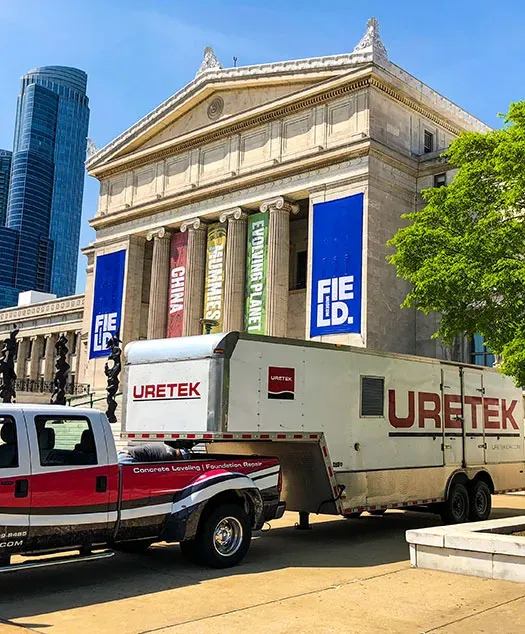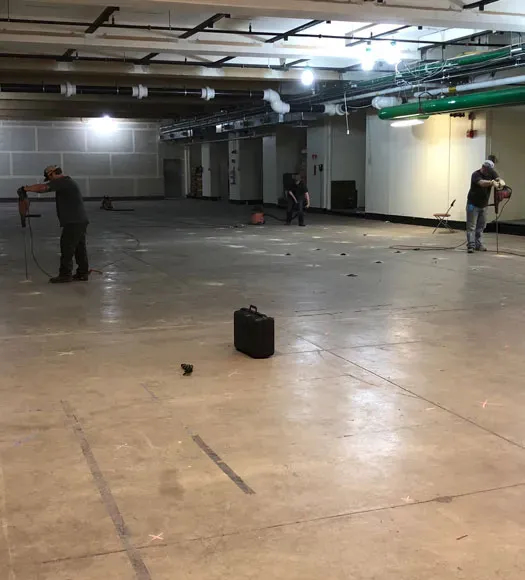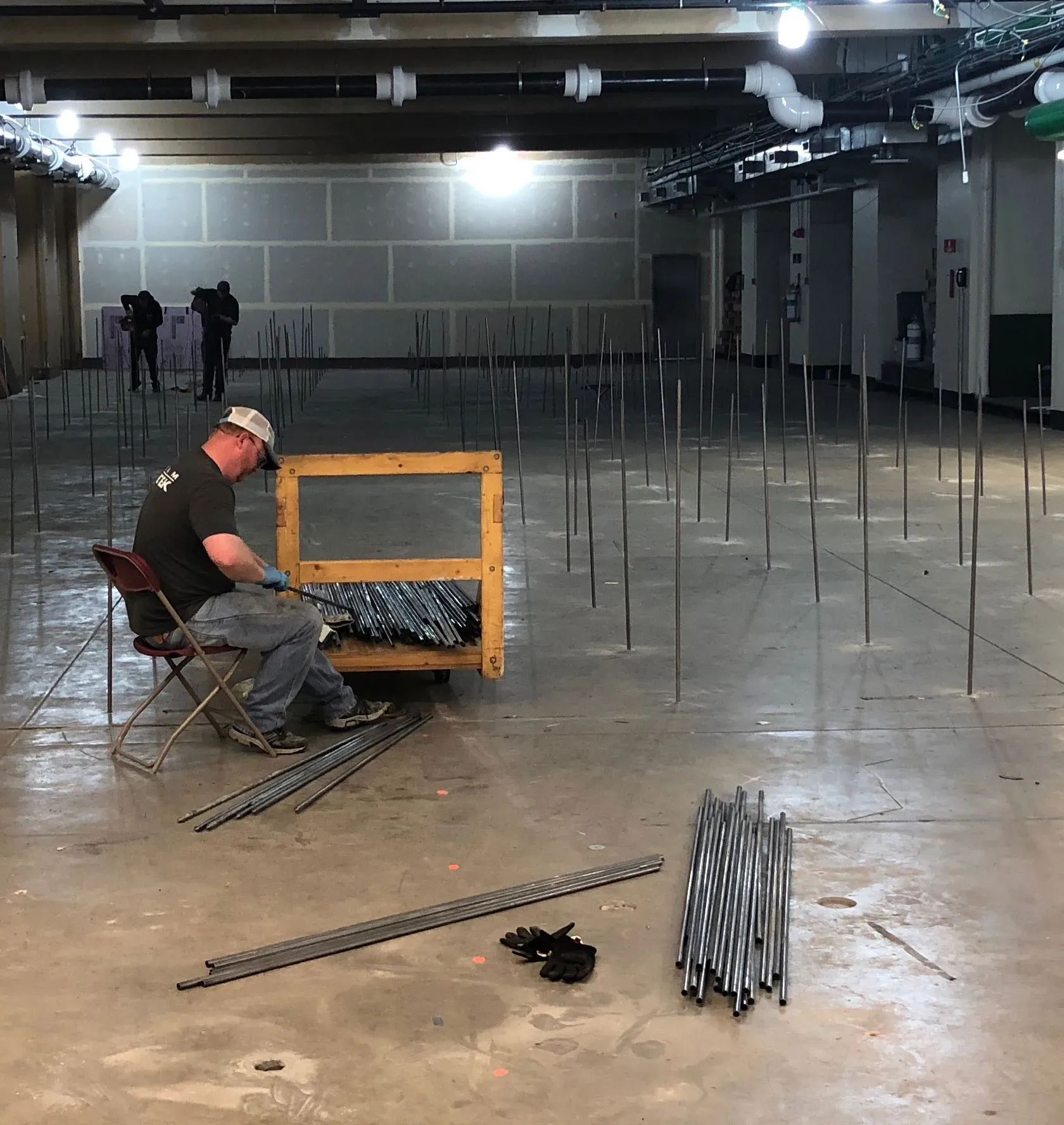Foundation Repair at the Field Museum of Chicago
Problem
Located on Chicago’s iconic Lake Michigan shore, The Field Museum of Natural History is one of the largest premier natural history museums in the world. The building site for the museum was constructed using poor fill materials including rubble from the Great Chicago Fire of 1871. The low bearing strength of these sub-grade soils caused the structure to settle over time; some areas of the ground floor settled as much as two-thirds of an inch. Adding to the problem, a 6,075 square foot ground floor room called the Pacific Research Room required a specialty repair solution due to additional structural challenges. The room had crawl spaces below concrete slabs with ground water in them from Lake Michigan, as well as heating tunnels and utility lines running the length of the room below the slab. Looking to repair the historic building, the museum enlisted the help of Cath Associates Engineering.
Analysis
Cath Associates performed Dynamic Cone Penetrometer (DCP) tests to confirm the areas of the floor that had the weakest soils. They determined that a fast, precise, and low-disruption repair method was needed to stabilize the flooring.
Solution
URETEK was hired for its history of success in non-intrusive polymer injection repair solutions. The URETEK Deep Injection® (UDI) process was utilized to fill the subterranean voids and compact / densify existing underlying supporting soils to the point of refusal.
Result
URETEK’s technicians successfully repaired and stabilized the ground floor of the museum in only three days using the UDI process. The process consolidated the weak soil, filled voids, and increased the bearing capacity of the concrete slabs. The museum saved thousands of dollars in time and money by choosing URETEK’s soil stabilization and foundation repair solution over other repair methods. Additionally, URETEK was able to complete the job with zero interruption to the museum’s daily operations. URETEK is honored to have been able to help The Field Museum of Chicago by restoring strength and stability to their beautiful and historic building.
URETEK Deep Injection® (UDI)
Widely referenced throughout our industry, UDI involves the injection of structural polymer into base and subgrade soils to increase the load bearing capacity. This is achieved by injecting the polymer through small holes drilled directly through the pavement structure to depths determined by site-specific analysis. Our URETEK 486 Star® material flows easily into voids and weak zones within the soil mass below. Through a controlled chemical reaction, the expanding polymer compacts surrounding soils and applies a controlled pressure on targeted areas of the affected pavement above. If needed, a multi-injection design plan is utilized to gently return the pavement to its original grade. The composite material quickly cures into a strong, dimensionally stable, and water-resistant geo-material, providing years of reliable service.
URETEK 486 Star®
URETEK 486 Star® polymer is a two-component, high-density, expanding thermoset polyurethane system. It was developed to be the ideal solution for under-sealing, void filling, lifting of settled pavement, stabilization and stiffening of weak soils, and for encapsulating and sealing buried infrastructure. URETEK 486 Star® is environmentally inert, non-toxic, and resists underground water erosion or weakening due to its industry-leading hydrophobic properties.


